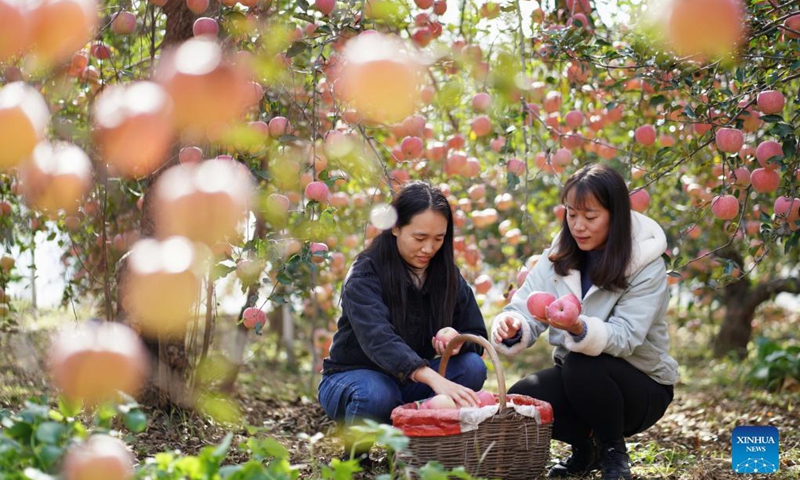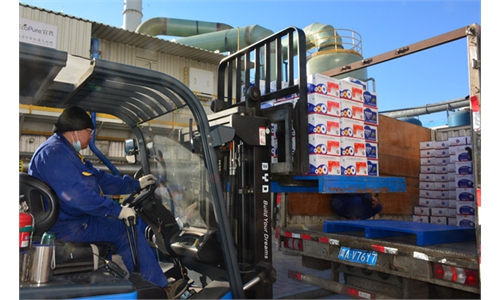
Tourists sort apples picked at an orchard in Gangdi Village of Neiqiu County in Xingtai City, north China's Hebei Province, Oct. 27, 2021. Local farmers started to harvest 3,500 mu (about 233 hectare) of apple recently.(Photo: Xinhua)
The spread of first-generation fall webworm, an invasive moth native to North America, is expected to grow more severe this year compared with past years in China, according to the National Forestry and Grassland Administration on Monday.
The pest’s plague has different level of severity in different regions. In certain areas in Anhui, Jiangsu and Henan provinces, the plague is moderately severe. In regions like Northeast China’s Jilin Province and Central China’s Hubei Province, the blight is generally less acute. In southern Jiangsu and northern Shanghai, the blight is evolving from developing in spots to developing in strips.
The administration noted that local governments in China should prepare resources as soon as possible and prevent the past in the best period of one to three stage larvae. The country will also strengthen pest control in new blight areas, areas connecting cities and counties, residential areas and other regions.
It also noted that regions detecting second-generation fall webworm like Liaoning and Jilin provinces should carry out inspections and investigations into the pest’s overwintering adult to mitigate economic loss.
According to media reports, the pest was introduced into China’s Liaoning province in 1979, but its spread has become particularly severe over recent months. By the end of September in 2021, outbreaks were detected in 607 counties of 14 provinces, resulting in cumulative damage of 10,427,300 acres and increasing the amount of infested area by 6.15%, data from China’s Biological Disaster Prevention and Control Center showed.
Ma Wenfeng, a veteran agricultural expert, told the Global Times that the pest mostly damages trees instead of farming crops. It also damages the yields of some fruit crops including peaches.
According to Ma, one reason for the spread of the pest is that China is increasing imports of agricultural products in recent years after agriculture investment slows. “This increases the risk of imported pests,” he said, suggesting that local governments could consider using biological control. That is, applying the pest’s natural enemies.
Global Times



